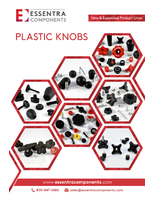Blades meet challenges of evolving materials and machinery.
Press Release Summary:
Custom-designed blades can be produced to accommodate specific machines/materials. Design process includes idea sharing, research into physical attributes and abilities of blades, and, in some cases, producing prototypes. In addition to considering 11 key attributes that affect blade performance, customization capabilities can combine different grinds in infinite variety of sequences. Saw body is always kept as thick as possible, relative to kerf, to promote stability.
Original Press Release:
Forrest Manufacturing Designs Solutions for Cutting Problems
New Blades Meet Challenges of Evolving Materials and Machinery
CLIFTON, New Jersey, March 12, 2009 - Unlike most of its high-volume competitors, Forrest has the ability to invent a blade for a single customer or particular purpose. "People can actually call us on the phone to request a custom-designed blade," says Jim Forrest, Jr., production manager and co-owner of Forrest Manufacturing.
Design Services Since the Company's Founding
Oftentimes, customers have machines or materials that require special blades. For example, in the past two decades, Forrest has designed numerous blades for plastics extrusion lines. "The plastics industry had machines to create its product, but needed blades to cut it," explains Jay Forrest, vice president. Forrest's dado set, designed to address the difficulties associated with cutting plywood veneers, is another example of a blade inspired by a material.
Solutions Founded on Knowledge and Execution
Forrest's design process includes sharing ideas based on years of accumulated knowledge and superb execution, research into the physical attributes and abilities of blades, and, in some cases, producing prototypes. In fact, a number of prototypes were made during the development of Forrest's solid surface planer, a blade for cutting countertops and solid surface materials.
Sometimes, admits Jim Forrest, the design process more closely resembles how Thomas Edison once described his own process of invention, saying he "failed his way to success."
Blades for Lasagna to Brushes
Forrest's design services staff has created saw blades for more than wood and plastics. In the past, they've made a blade for a lasagna manufacturer. "It was similar to designing for a plastics extrusion line," explains Jay Forrest. "The lasagna has to be cut to the length of the package it's put in." Forrest has also made blades to cut solid rocket fuel underwater; blades ganged in groups of 10 or 20 to rip thin strips of molding; blades to cut special plastic used for hurricane shutters; and blades to trim the brush ends of paint brushes. They've even created what Jay Forrest refers to as an "ugly blade," a 20-inch-diameter, 20-tooth blade that cuts a six-inch-thick, soft, gummy material resembling an automobile bumper.
Choosing Attributes to Achieve Top Performance
Saw blades have about 11 key attributes that affect their performance. Among these are the shape of the teeth, the angle of the front of each tooth, and the thickness of the saw plate relative to the width of the cut.
Tooth shape, or grind, is determined by how the blade needs to cut, as well as the material it's intended to cut. For example, a flat top grind (FTG) tooth (also called a raker) with a flat top edge perpendicular to the saw body, is appropriate for fast ripping, rough crosscutting, and producing grooves in wood and plastic. An alternating top bevel (ATB) refers to a tooth with a top edge that angles to the left or right, from one tooth to the next. The greater the degree of angle - 30 to 40 degrees - the better the blade is for cross cutting. Conversely, the smaller the degree of angle - 20 degrees - the better the blade is for ripping. Triple chip grind (TCG) refers to teeth with a flat top and two angled edges (chamfered) that alternate with rakers. A TCG blade is good for ripping and other heavy-duty work. Different grinds can be combined in an almost infinite variety of sequences to achieve various capabilities with different types of materials.
Face hook refers to the angle on the front, or face, of the tooth. The more aggressive the face hook, the easier material will feed. However, it will have an increased tendency to chip. "If less chipping is desired, a five-degree face hook works better than a 20-degree hook," explains Jim Forrest.
Since every circular saw blade can approach a speed that causes it to flutter or vibrate, Forrest's rule is to keep the saw body as thick as possible relative to the
kerf, or width of the cut, to promote stability. Says Jim Forrest, "A heavy blade is more stable and consequently, it makes more accurate cuts."
When it comes to designing custom blades, however, design isn't the only factor that impacts performance. "Execution counts," says Jay Forrest. "If you can't grind an edge to the desired specifications or if you can't hold to tight tolerances and keep a blade straight, it's simply not going to work." Jim Forrest adds that even the finest grade carbide can't compensate for a less-than-perfectly-made blade.
"Custom design is a challenge. It's intriguing and it stimulates the mind," says Jay Forrest. "We're lucky we're able to do it and we take great pride in our efforts."
About Forrest Manufacturing
In fact, for over 60 years, Forrest Manufacturing has been designing and producing high quality saw blades to meet the needs of its customers, from skilled craftsmen to discriminating manufacturers. Made in America, Forrest blades are available direct from the factory or from fine-quality dealers, retailers, and catalogs.
Every blade carries a full-refund, 30-day guarantee. For more information about Forrest Manufacturing's saw blades and other products, visit www.ForrestBlades.com. For design services, please call 1-800-733-7111.




